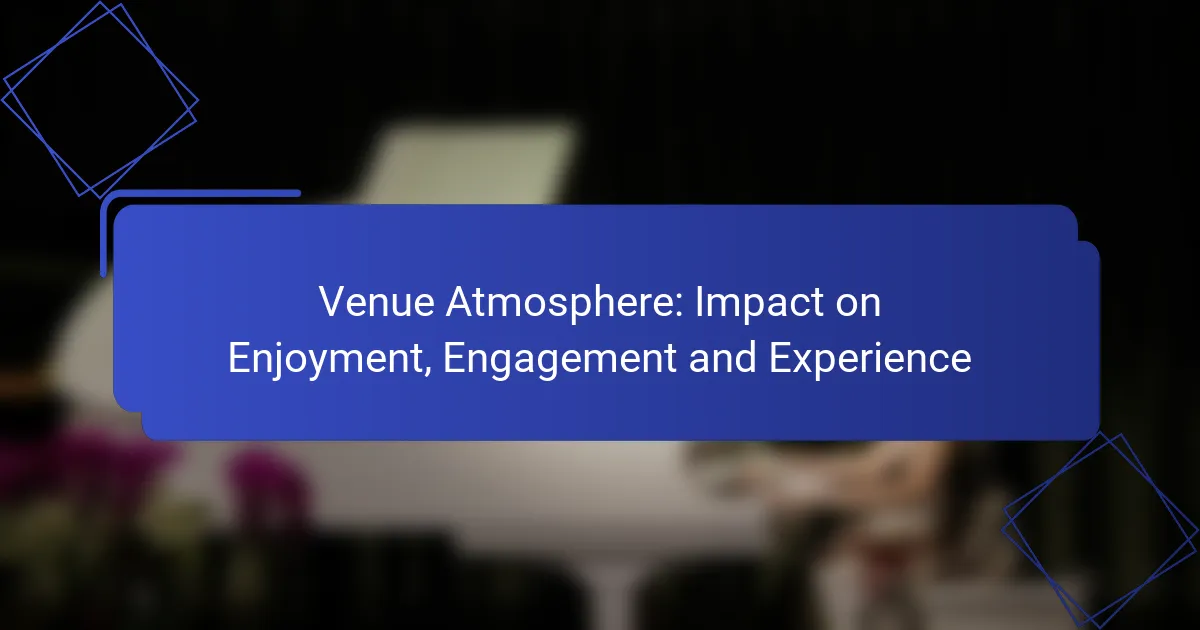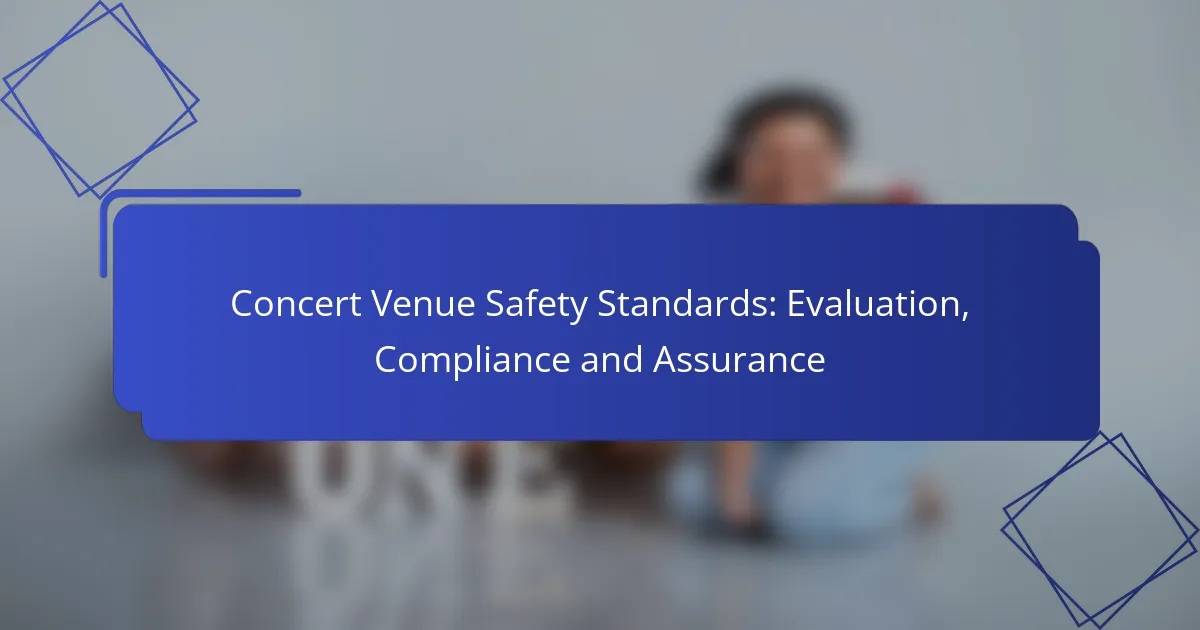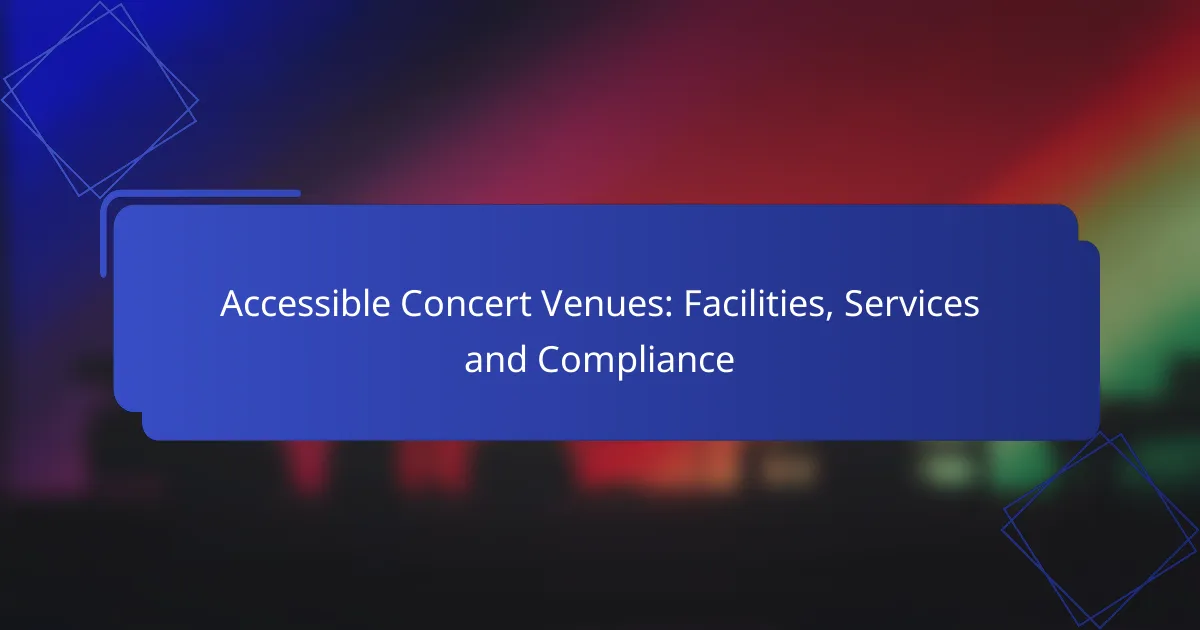The atmosphere of a venue plays a crucial role in shaping the enjoyment and engagement of attendees, particularly in vibrant settings like New York City. Factors such as lighting, sound, and seating comfort not only enhance aesthetic appeal but also influence how patrons perceive their overall experience. By focusing on elements that captivate and encourage interaction, venues can significantly elevate the enjoyment and satisfaction of their guests.

How does venue atmosphere affect enjoyment in New York City?
The atmosphere of a venue significantly impacts enjoyment in New York City by shaping the overall experience and engagement of attendees. Elements such as lighting, sound, and seating comfort contribute to how patrons perceive and enjoy their time at various locations.
Lighting and decor influence mood
Lighting and decor play a crucial role in setting the mood of a venue. In New York City, venues often use warm, inviting lighting to create a cozy atmosphere, while vibrant colors and unique decor can energize spaces. For instance, a dimly lit jazz club may enhance the intimacy of live performances, while bright, colorful art installations in a gallery can stimulate creativity.
When selecting a venue, consider how its lighting and decor align with the desired experience. A well-lit restaurant can encourage social interaction, while a lounge with softer lighting may promote relaxation. Aim for a balance that matches the event’s purpose.
Sound quality enhances experience
Sound quality is vital for enjoyment, especially in venues hosting live music or performances. In New York City, high-quality sound systems can elevate the experience, ensuring clarity and richness in audio. Poor acoustics, on the other hand, can detract from performances and lead to frustration among attendees.
When choosing a venue, assess its sound setup. Look for places that prioritize sound engineering and have a reputation for excellent audio quality. A venue with good sound can significantly enhance the overall enjoyment of events, making them more memorable.
Comfortable seating increases satisfaction
Comfortable seating is essential for a positive experience in any venue. In bustling New York City, patrons often spend several hours at events, making adequate seating a priority. Venues that offer plush chairs or spacious booths tend to increase satisfaction and encourage longer stays.
When evaluating a venue, consider the seating arrangements. Avoid places with cramped seating or hard benches, as these can lead to discomfort and detract from enjoyment. Opt for venues that provide a range of seating options to accommodate different preferences and enhance the overall experience.

What are the key elements of venue atmosphere?
The key elements of venue atmosphere include aesthetic appeal, acoustic design, and temperature and air quality. Each of these factors significantly influences the enjoyment, engagement, and overall experience of attendees.
Aesthetic appeal of the venue
Aesthetic appeal encompasses the visual elements of a venue, such as decor, lighting, and layout. A well-designed space can enhance mood and create a welcoming environment, encouraging guests to stay longer and engage more deeply with the event.
Consider using color schemes that evoke specific emotions or themes relevant to the event. For example, warm colors can create a cozy atmosphere, while cooler tones may promote calmness. Additionally, incorporating art or unique design features can make the venue memorable.
Acoustic design and sound management
Acoustic design involves the arrangement of materials and structures within a venue to optimize sound quality. Proper sound management ensures that music, speeches, and conversations can be heard clearly without distortion or excessive noise.
To achieve good acoustics, consider using sound-absorbing materials like carpets and curtains, and strategically placing speakers to avoid echoes. It’s also important to conduct sound checks before events to adjust levels and minimize feedback.
Temperature and air quality
Temperature and air quality play a crucial role in attendee comfort and satisfaction. Maintaining a comfortable temperature range, typically between 20-22°C (68-72°F), can help keep guests focused and engaged.
Ensure proper ventilation and air circulation to maintain good air quality. Using air purifiers or regularly replacing filters can help reduce allergens and improve overall comfort. Monitoring humidity levels is also important, as excessively dry or humid conditions can detract from the experience.

How can venues improve engagement through atmosphere?
Venues can enhance engagement by creating an atmosphere that captivates attendees and encourages interaction. This can be achieved through various strategies that focus on interactive elements, personalized experiences, and consistent themes.
Interactive elements boost participation
Incorporating interactive elements, such as live polls, games, or hands-on activities, can significantly increase participation levels. These features invite guests to engage directly with the event, making them feel more involved and invested.
For example, venues can set up digital kiosks where attendees can share feedback or participate in contests. This not only enhances engagement but also provides valuable insights for future events.
Personalized experiences enhance connection
Personalization in a venue’s atmosphere can create a deeper connection between attendees and the event. Tailoring experiences based on guest preferences, such as customized seating arrangements or targeted content, fosters a sense of belonging.
Simple strategies include using name tags with personalized greetings or offering curated experiences based on attendee demographics. These small touches can make a significant difference in how connected guests feel to the event.
Theme consistency fosters immersion
Maintaining a consistent theme throughout the venue helps create an immersive experience that captivates attendees. This includes aligning decor, music, and activities with the event’s overall concept.
For instance, a retro-themed event could feature vintage decor, classic music, and activities that reflect that era. Consistency in theme not only enhances the atmosphere but also strengthens the overall experience for attendees.

What role does venue layout play in the overall experience?
The layout of a venue significantly influences the overall experience by affecting how attendees interact with each other and the environment. A well-designed space enhances enjoyment and engagement, while a poorly structured layout can lead to frustration and disengagement.
Flow and accessibility impact movement
Flow and accessibility are crucial for ensuring smooth movement within a venue. A layout that allows for easy navigation minimizes congestion and enhances the experience, especially in high-traffic areas like entrances and exits. Consider wide pathways and clear signage to guide attendees effectively.
Incorporating accessible features, such as ramps and designated seating, ensures that all guests can move freely and comfortably. This inclusivity not only meets legal standards but also fosters a welcoming atmosphere.
Seating arrangements affect social interaction
The arrangement of seating plays a vital role in facilitating social interactions. For example, circular or semi-circular seating encourages conversation and connection, while traditional rows may isolate individuals. Choosing the right configuration can enhance networking opportunities and create a more engaging environment.
Consider flexible seating options that can be rearranged based on the event type. This adaptability allows for different social dynamics, whether it’s a formal presentation or a casual gathering.
Zones for different activities enhance versatility
Creating distinct zones for various activities can significantly enhance the versatility of a venue. Designating areas for relaxation, dining, and entertainment helps manage noise levels and crowd dynamics, allowing attendees to choose their preferred environment. This zoning can lead to a more enjoyable experience overall.
When planning these zones, think about the flow between them. Ensure that transitions are seamless and that each area is equipped with appropriate amenities, such as seating, lighting, and sound systems, to support the intended activities.

How can venues measure the impact of atmosphere on customer experience?
Venues can assess the impact of atmosphere on customer experience through various methods, focusing on direct feedback and engagement metrics. By combining qualitative insights from customers with quantitative data, venues can gain a comprehensive understanding of how atmosphere influences enjoyment and engagement.
Surveys and feedback collection
Surveys are a straightforward way to gather customer opinions on the venue’s atmosphere. Questions can cover aspects such as lighting, music volume, seating comfort, and overall ambiance. Using a mix of rating scales and open-ended questions can provide both quantitative and qualitative data.
Consider implementing feedback kiosks or mobile surveys immediately after a customer’s visit. This timing can yield more accurate responses, as customers are likely to remember their experience better. Offering incentives, like discounts on future visits, can also increase participation rates.
Data analytics on engagement levels
Analyzing customer engagement levels can reveal how atmosphere affects behavior within the venue. Metrics such as dwell time, repeat visits, and social media interactions can provide insights into customer satisfaction. For instance, longer dwell times may indicate a more enjoyable atmosphere.
Utilizing tools like heat maps can visually represent areas where customers spend the most time, helping venues identify which aspects of the atmosphere are most appealing. Regularly reviewing these analytics can help venues adapt and enhance their atmosphere to better meet customer preferences.



